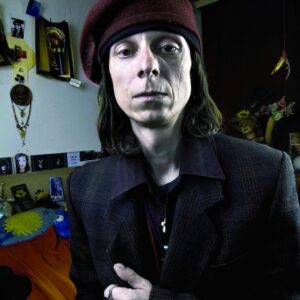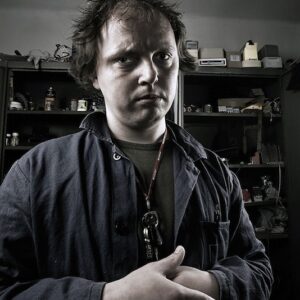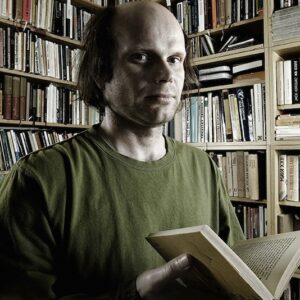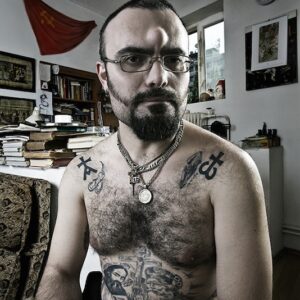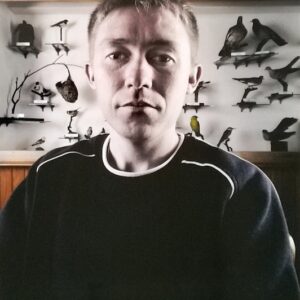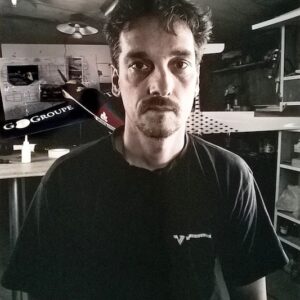Those born in the former Czechoslovak Socialist Republic between the years 1972 and 1982 are often referred to as “Husák’s Children”. In the normalisation period, with Gustáv Husák as President since 1975, the Communist Party’s policy to support young families resulted in a baby boom – a strong population wave, during which the number of children that had been born was higher than the number of inhabitants who had died. The generation of these people who are now in their thirties and forties represents a specific sociological phenomenon. As children they experienced the socialist era, which most of them didn’t see negatively. In their puberty, the Velvet Revolution came, which, due to their young age, the majority of them didn’t participate in actively, and as adolescents, they had to come to terms with the wild rise of capitalism. They were scarred by some of the negative effects that the transformation of the socialist society into a capitalist one brought with itself (e.g. many of these people, especially those born towards the end of the period, still have no families of their own due to putting their education and career first, and some of them still live with their parents due to their difficult financial situation). On the other hand, as opposed to older generations, they had the opportunity to travel freely, study or work abroad and they weren’t all obliged to serve a compulsory two year-long military service. The photograph series with the title Husák’s Generation is about searching for, or even defining, a collective identity, or at least some common features of this group of people, although viewing this generation as homogenous can be problematic.
The Husák’s Generation photograph cycle was part of the artist’s Bachelor Thesis at the VŠVU (the Academy of Fine Arts and Design). The six photographs in the Nitra Gallery’s collection depict the portraits of a variety of men, from intellectuals to workers, who are more or less anonymous to the viewers. A little more about their social class, vocation or interests is revealed by the environment that these men are photographed in, whether it is a bedroom, a workshop, a library or a museum. Apart from the portrayed persons’ rather distinctive physiognomy, thanks to the copious interiors, we are able to catch a glimpse of their character, which urges us to ask ourselves: “Who are these men? What do they do and what are their lives like? Are they special in any way at all?” The artist puts a great emphasis on the technical aspect of the photographs, on the composition, light and scene. A high degree of stylisation can be seen from the static portraits, photographed mainly en face. The photographs are definitely not snapshots depicting the portrayed person in any kind of (inter)action.
But why are there, in these portraits of one generation, only men, when more girls were (and are) born than boys? At the exhibition titled Inter-view 2 [1], Barbora Geržová attempted to look at this photograph cycle from the gender point of view. In the catalogue which accompanied this exhibition, Peter Ančic answered her questions relating to the gender interpretation, expressing his views on the whole cycle as follows: “The Husák’s Generation set is also based on my personal experience (the image of my contemporaries and the socio-political situation I have experienced). To some extent, the topic served me as an opportunity to express myself and to present a perhaps more or less generational view on the social and economical changes in this area. The members of this generation were the victims of the economical transformation (e.g. the experience with job centres – a high unemployment rate, social benefits, a compulsory military service in an army about to go bankrupt, the impossibility to have one’s own place to live – as mortgages emerged as late as at the end of the 1990s – and permanent or temporary emigration). This experience is probably common to the whole generation and not divided by gender. My original aim was to photograph both sexes and that was how my work started. However, right at the beginning I encountered a problem while taking photographs of women in their own space or in the environment they usually spent their time in. It was much more difficult than with the men. If you have a look at the collection, you will see some musicians, a DIY enthusiast, an unemployed artist, a passionate natural scientist, a philosopher, and so on. But with the women, a problem arose as their self-realisation was much smaller. The women had fewer interests (often reduced to the liking of some band, with very few women actively playing in a band, doing sports or otherwise fulfilling their potential in general), very few of them wanted to be associated with the space in which they were living with their parents (children’s bedrooms without any significant alterations, with the women lacking the significance of living in these spaces that was present in the men, for example). The self-realisation of these women was at a much more concealed level, often reduced to the world of their partner and family relationships. Now, that is something which relates to the issue of gender. In other words, this generation has certain gender-specific behavioural patterns, but I haven’t found any work (sociological or socio-anthropological), which reflects it, or even deals with these issues, so it is merely my personal view. This was basically how the ‘men’s world’ came into existence – the part of my work that I am presenting now. My aim was to photograph a set which would contain women and men in similar numbers, but I haven’t managed to do this yet. However, while shooting the set titled Generation 89, it was surprising for me to see that the women from this generation have different behavioral patterns and identify themselves in a different way (the men too, of course).” [2]
Peter Ančic was born in 1978 in Trnava. In 1998-2002 he studied Photography at the Institute of Creative Photography at the Faculty of Philosophy and Science, Silesian University in Opava, Czech Republic. In 2003-2010 he studied at the Department of Photography and New Media, Academy of Fine Arts and Design in Bratislava, where he currently continues his doctoral studies, as well as working as an Assistant Professor since 2010. In 2010 he became a finalist of the Photo of the Year competition, organised by the VUB Foundation. He lives and works in Bratislava.
Omar Mirza
April 2015
Footnotes:
[1] This international exhibition curated by Barbora Geržová took place from the 1st of December 2011 until the 26th of February 2012 in the Nitra Gallery Representative Halls. For more information about the exhibition, visit this link
[2] In: Barbora Geržová, Inter-view 2 Exhibition Catalogue, Nitra Gallery, Nitra, 2011, ISBN 978-80-85746-55-6. For more information about the catalogue, visit this link
Inventory No.: F-125; F-126; F-127; F-128;
F-130; F-131
Artist: Peter Ančic
Title: from the “Husák’s Generation” series
Year of origin: 2008
Technique: C-print
Material: archive photo paper
Dimensions: 105 × 70 cm
Signature: F-125: on the back side at the bottom: Hus. generácia č. /Hus. Generation No./ 1., Ančic 3/5, in black marker, calligraphy; F-126: on the back side at the bottom: Hus. generácia č. /Hus. Generation No./ 2., Ančic 3/5, in black marker, calligraphy; F-127: on the back side at the bottom: Hus. generácia č. /Hus. Generation No./ 3., Ančic 3/5, in black marker, calligraphy; F-128: on the back side at the bottom: Hus. generácia č. /Hus. Generation No./ 4., Ančic 3/5, in black marker, calligraphy; F-130: on the back side at the bottom: Hus. generácia č. /Hus. Generation No./ 5., Ančic 3/5, in black marker, calligraphy; F-131: on the back side at the bottom: Hus. generácia č. /Hus. Generation No./ 7., Ančic 3/5, in black marker, calligraphy
This acquisition has been supported using public funds provided by the Ministry of Culture of the Slovak Republic.
